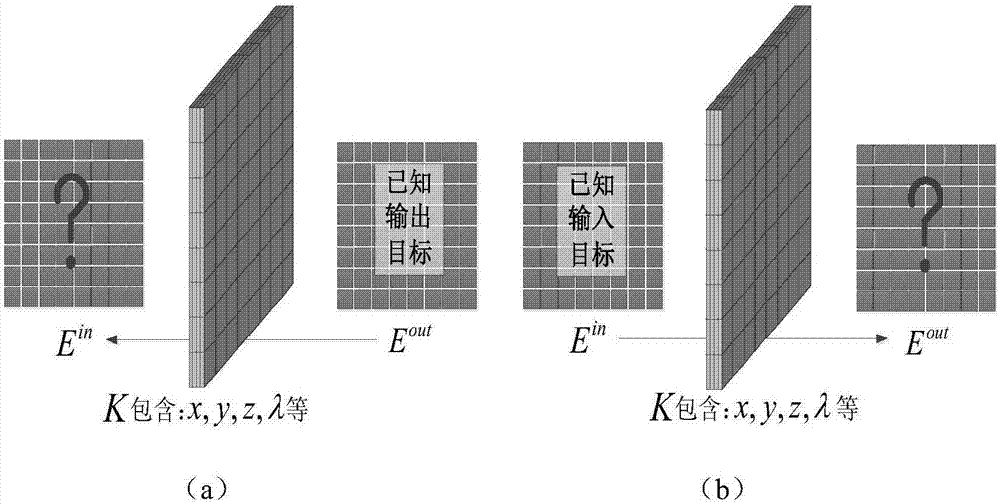Programmable optical component based on scattering medium, optical field regulation system, and optical field regulation method
A technology for optical components and control systems, applied in the measurement of scattering characteristics, etc., can solve the problems of high cost, limited function and high cost, and achieve the effect of simple structure, complete functions and simple production.
- Summary
- Abstract
- Description
- Claims
- Application Information
AI Technical Summary
Problems solved by technology
Method used
Image
Examples
Embodiment 1
[0042] At present, most of the methods used to regulate the light field in the optical field are designed for specific beams, and the functions of the fabricated optical components are limited, and the transmission function cannot be flexibly adjusted, and the multifunctional optical transformation effect cannot be achieved. It is impossible to construct real-time controllable optical components and systems. At the same time, some optical field control methods require complex optical system structures, high cost and difficult to realize. Other methods have strict requirements on the system and cannot be applied to practical applications. middle. In view of this situation, the present invention proposes a low-cost, easy-to-operate, high-integration, and strong controllable digitally programmable intelligent optical element and light field control system and method based on scattering media through research and innovation.
[0043] The present invention is a programmable optical...
Embodiment 2
[0047] The overall composition of the programmable optical element and the light field control system based on the scattering medium is the same as that in Embodiment 1, see figure 1, in the scattering medium microscope module of the present invention, the scattering medium 7 is either a strong scattering material, or a high refractive index material whose surface is polished to a rough surface. The role of the scattering medium 7 is described by the optical transmission matrix. By changing the transmittance, surface roughness and shape of the scattering medium 7, the optical transmission matrix with different properties is obtained. After the optical transmission matrix is measured, the scattering medium 7 acts as a freely controllable self- Adapting to multifunctional optical elements, it can achieve the optical transformation control effect realized by diffractive optical elements and refractive optical elements, such as focusing, imaging, dispersion, anomalous dispersion,...
Embodiment 3
[0050] The overall composition of the programmable optical element based on the scattering medium and the light field control system is the same as that of Embodiment 1-2, the first microscopic objective lens 6 and the second microscopic objective lens 8 in the micromodule of the present invention, and the first microscopic objective lens 6 Used to focus light waves and penetrate the scattering medium 7 , the second microscope objective lens 8 is used to collect the light scattered by the scattering medium 7 into the detector 9 . The magnification of the first microscopic objective lens 6 and the second microscopic objective lens 8 is proportional, and its ratio obeys the formula D SLM / D cmos =b 1 / b 2 , where D SLM Indicates the pixel size of the spatial light modulator 4, D cmos Indicates the pixel size received by the detector 9, b 1 Indicates the magnification of the first microscope objective lens 6, b 2 Indicates the magnification of the second microscope objectiv...
PUM
 Login to View More
Login to View More Abstract
Description
Claims
Application Information
 Login to View More
Login to View More - R&D
- Intellectual Property
- Life Sciences
- Materials
- Tech Scout
- Unparalleled Data Quality
- Higher Quality Content
- 60% Fewer Hallucinations
Browse by: Latest US Patents, China's latest patents, Technical Efficacy Thesaurus, Application Domain, Technology Topic, Popular Technical Reports.
© 2025 PatSnap. All rights reserved.Legal|Privacy policy|Modern Slavery Act Transparency Statement|Sitemap|About US| Contact US: help@patsnap.com



